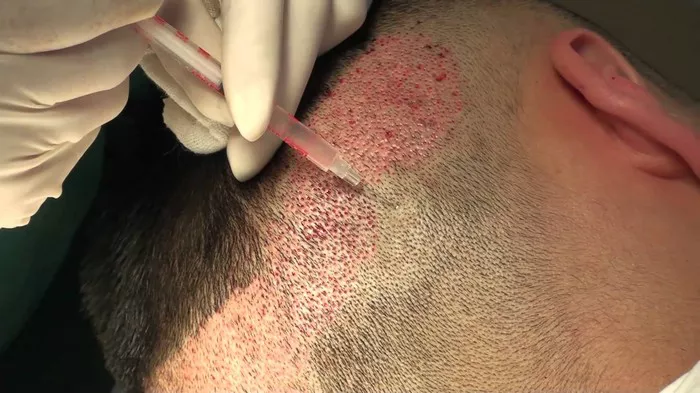Hair transplants have become a popular solution for those experiencing hair loss. The procedure promises fuller hair and improved confidence. However, many individuals wonder: Can you go bald after a hair transplant? In this article, we’ll explore the various factors influencing hair loss post-transplant, the science behind hair restoration, and what you can expect during your hair journey.
Understanding Hair Transplants
What Is a Hair Transplant?
A hair transplant involves relocating hair follicles from a donor site, typically the back of the head, to areas of thinning or balding. The two primary methods are:
Follicular Unit Transplantation (FUT): Involves removing a strip of scalp and dissecting it into individual grafts.
Follicular Unit Extraction (FUE): Involves extracting individual hair follicles directly from the scalp.
Why Do People Experience Hair Loss?
Before delving into post-transplant baldness, it’s essential to understand the causes of hair loss:
Genetic Factors: Androgenetic alopecia, or male/female pattern baldness, is the most common cause.
Medical Conditions: Conditions like alopecia areata or thyroid disorders can lead to hair loss.
Lifestyle Factors: Stress, poor nutrition, and certain hairstyles can also contribute.
The Hair Growth Cycle
To comprehend how hair transplants work, we need to discuss the hair growth cycle, which includes three phases:
Anagen Phase: The active growth phase.
Catagen Phase: The transitional phase, where hair stops growing.
Telogen Phase: The resting phase before hair falls out.
Understanding this cycle is crucial for managing expectations post-transplant.
Can You Go Bald After a Hair Transplant?
The Basics of Post-Transplant Hair Loss
Yes, it is possible to experience further hair loss after a hair transplant, and there are several reasons for this:
Shock Loss: After a transplant, some existing hair may fall out due to trauma from the procedure. This is typically temporary.
Continued Hair Loss: The underlying genetic condition that caused hair loss initially can still affect existing hair, leading to further thinning or baldness in areas that were not transplanted.
Factors Influencing Hair Loss After a Transplant
Genetics: If you have a genetic predisposition for hair loss, transplanted hair can remain healthy while surrounding hair continues to thin.
Age: Younger individuals may experience more significant hair loss over time compared to older individuals who have already lost hair.
Hair Loss Type: Different types of hair loss (e.g., diffuse thinning vs. localized baldness) can affect how much hair remains post-transplant.
Managing Expectations
It’s vital to have realistic expectations regarding hair restoration. While many people see significant improvement, others may experience further loss. Consulting with a qualified surgeon can help you understand your specific situation.
What to Expect After a Hair Transplant
Immediate Aftercare
Post-operative care is crucial to ensure the success of the transplant. Patients should follow their surgeon’s guidelines, which typically include:
Avoiding strenuous activities for a few weeks.
Keeping the scalp clean and moisturized.
Taking prescribed medications to reduce inflammation.
Long-Term Results
Hair growth following a transplant typically begins within three to four months. Most individuals see full results within 12 to 18 months.
Signs of Trouble
While many experience positive outcomes, it’s essential to monitor for potential issues, such as:
Persistent redness or swelling.
Infections or unusual pain.
Continued excessive hair loss beyond the expected shock loss.
Hair Restoration Alternatives
If you’re concerned about going bald after a hair transplant, consider these alternatives:
Medications: Minoxidil and finasteride can help slow hair loss and promote regrowth.
Low-Level Laser Therapy (LLLT): This non-invasive treatment stimulates hair follicles.
Scalp Micropigmentation (SMP): This technique involves tattooing tiny dots on the scalp to mimic hair follicles.
Wigs and Hairpieces: These can be an effective, non-surgical solution for those experiencing hair loss.
Lifestyle Tips for Healthy Hair
Maintaining healthy hair post-transplant is essential for the longevity of your results. Here are some tips:
Nutrition: A balanced diet rich in vitamins and minerals supports hair health.
Hydration: Staying hydrated helps maintain scalp health.
Stress Management: Techniques such as yoga, meditation, or exercise can reduce stress, a significant factor in hair loss.
Gentle Hair Care: Avoid harsh treatments and hairstyles that pull on the hair.
Conclusion
While a hair transplant can provide a solution for hair loss, it’s essential to understand that you may still experience some degree of hair loss afterward. By managing expectations and adhering to post-operative care, you can enhance your results. Remember, consulting with a qualified professional can help tailor a plan that meets your needs, ensuring your hair journey is as successful as possible.
Related topics:
- What to Expect Two Months After a Hair Transplant?
- Hair Transplants and Alopecia: Do They Really Work?
- Does FUE Leave Scars? Understanding Follicular Unit Extraction


